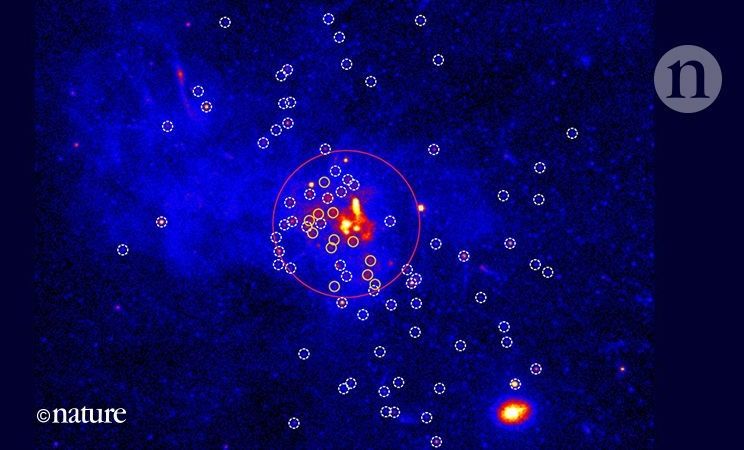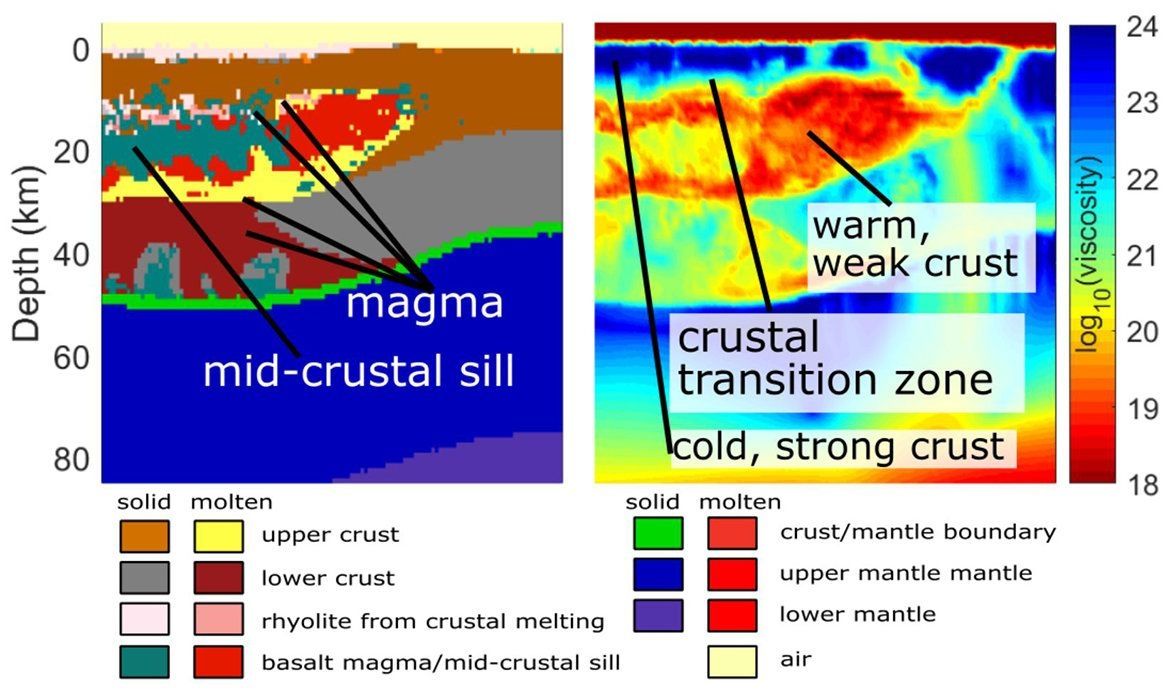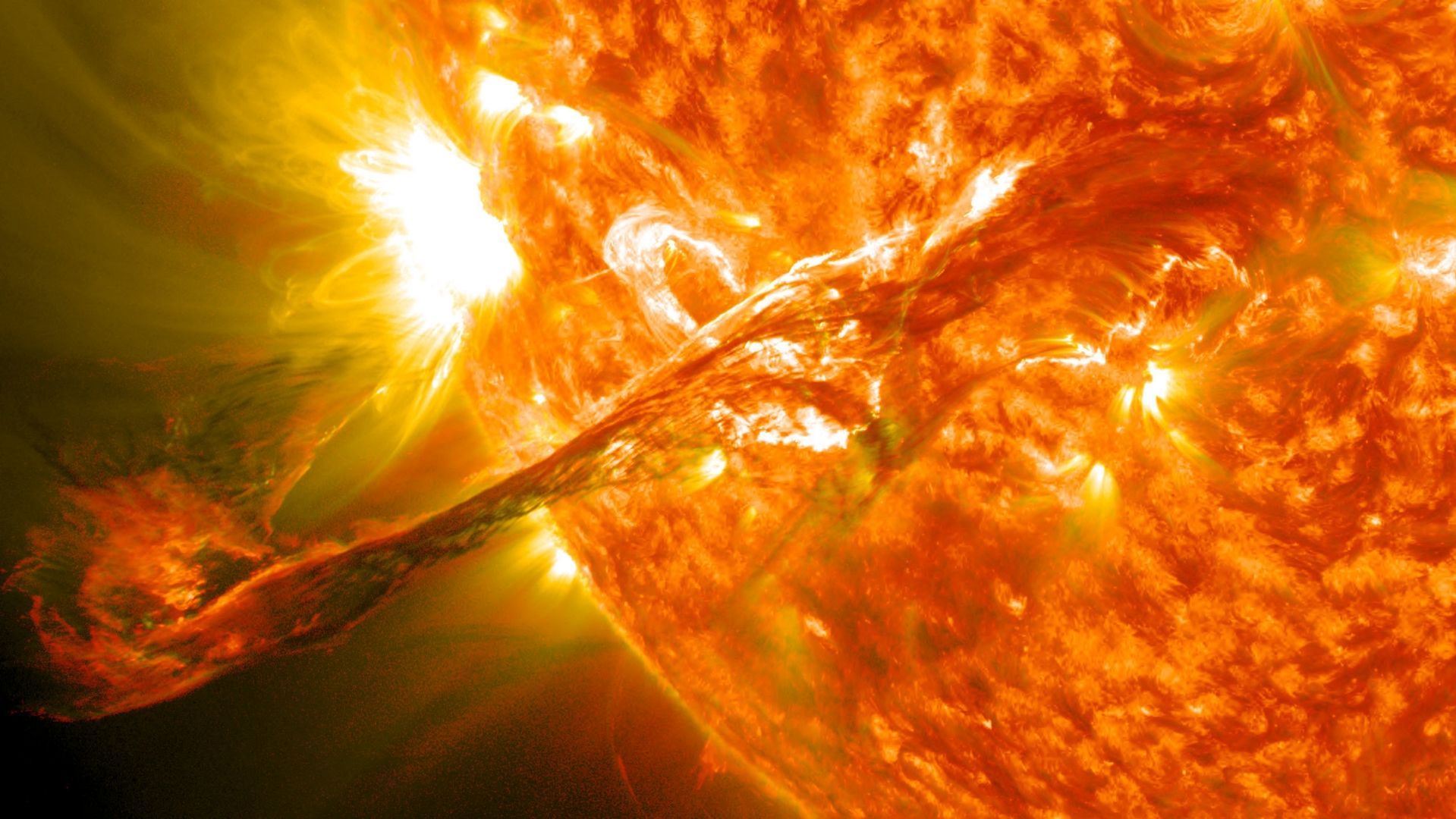Page 8840
Apr 16, 2018
Scientists decipher the magma bodies under Yellowstone
Posted by Genevieve Klien in categories: energy, supercomputing
Using supercomputer modeling, University of Oregon scientists have unveiled a new explanation for the geology underlying recent seismic imaging of magma bodies below Yellowstone National Park.
Yellowstone, a supervolcano famous for explosive eruptions, large calderas and extensive lava flows, has for years attracted the attention of scientists trying to understand the location and size of magma chambers below it. The last caldera forming eruption occurred 630,000 years ago; the last large volume of lava surfaced 70,000 years ago.
Crust below the park is heated and softened by continuous infusions of magma that rise from an anomaly called a mantle plume, similar to the source of the magma at Hawaii’s Kilauea volcano. Huge amounts of water that fuel the dramatic geysers and hot springs at Yellowstone cool the crust and prevent it from becoming too hot.
Continue reading “Scientists decipher the magma bodies under Yellowstone” »
Apr 16, 2018
Team develops face recognition technology that works in the dark
Posted by Genevieve Klien in categories: military, privacy, robotics/AI, surveillance
Army researchers have developed an artificial intelligence and machine learning technique that produces a visible face image from a thermal image of a person’s face captured in low-light or nighttime conditions. This development could lead to enhanced real-time biometrics and post-mission forensic analysis for covert nighttime operations.
Thermal cameras like FLIR, or Forward Looking Infrared, sensors are actively deployed on aerial and ground vehicles, in watch towers and at check points for surveillance purposes. More recently, thermal cameras are becoming available for use as body-worn cameras. The ability to perform automatic face recognition at nighttime using such thermal cameras is beneficial for informing a Soldier that an individual is someone of interest, like someone who may be on a watch list.
The motivations for this technology—developed by Drs. Benjamin S. Riggan, Nathaniel J. Short and Shuowen “Sean” Hu, from the U.S. Army Research Laboratory—are to enhance both automatic and human-matching capabilities.
Apr 16, 2018
Scientists have found a way to mimic human learning using brain chemicals — and it could impact future AI
Posted by Genevieve Klien in categories: futurism, robotics/AI
Serotonin influences the way humans make decisions. If scientists replicate this in an artificial intelligence system, depression could be a side-effect.
Apr 16, 2018
STE: Steve Hoffman on the Singularity
Posted by Shailesh Prasad in category: singularity
Apr 16, 2018
Ultra-Accurate Clocks Lead Search for New Laws of Physics
Posted by Genevieve Klien in categories: cosmology, physics
Atomic clocks are letting physicists tighten the lasso around elusive phenomena such as dark matter.
Apr 16, 2018
Robot cognition requires machines that both think and feel
Posted by Marcos Than Esponda in categories: robotics/AI, space travel
Most proposals for emotion in robots involve the addition of a separate ‘emotion module’ – some sort of bolted-on affective architecture that can influence othe…r abilities such as perception and cognition. The idea would be to give the agent access to an enriched set of properties, such as the urgency of an action or the meaning of facial expressions. These properties could help to determine issues such as which visual objects should be processed first, what memories should be recollected, and which decisions will lead to better outcomes.
For more than two millennia, Western thinkers have separated emotion from cognition – emotion being the poorer sibling of the two. Cognition helps to explain the nature of space-time and sends humans to the Moon. Emotion might save the lioness in the savannah, but it also makes humans act irrationally with disconcerting frequency.
In the quest to create intelligent robots, designers tend to focus on purely rational, cognitive capacities. It’s tempting to disregard emotion entirely, or include only as much as necessary. But without emotion to help determine the personal significance of objects and actions, I doubt that true intelligence can exist – not the kind that beats human opponents at chess or the game of Go, but the sort of smarts that we humans recognise as such. Although we can refer to certain behaviours as either ‘emotional’ or ‘cognitive’, this is really a linguistic short-cut. The two can’t be teased apart.
Continue reading “Robot cognition requires machines that both think and feel” »
Apr 16, 2018
Elon Musk’s latest SpaceX idea involves a party balloon and bounce house
Posted by Genevieve Klien in categories: Elon Musk, habitats, space travel
Elon Musk took to Twitter Sunday night to announce a new recovery method for an upper stage SpaceX rocket. A balloon — a “giant party balloon” to quote him directly — will ferry part of a rocket to a bounce house. Seriously.
If anyone else proposed this idea they would be ignored, but Elon Musk lately has a way of turning crazy ideas into reality.
It was just in 2012 that SpaceX launched and landed its first rocket and now the company is doing it with rockets significantly larger. And then early this year SpaceX made a surprise announcement that it would attempt to use a high-speed boat and large net to catch part of rocket. And it worked after a failed first attempt.
Continue reading “Elon Musk’s latest SpaceX idea involves a party balloon and bounce house” »
Apr 16, 2018
Huge solar ‘tornadoes’ don’t spin after all, study shows
Posted by Genevieve Klien in category: space
Giant plasma “tornadoes” raging across the surface of the sun don’t actually spin like astronomers once thought, new research shows.
Massive solar tornadoes, formally known as tornado prominences, which were first observed about 100 years ago, seemed to bear a striking resemblance to tornadoes on Earth. These gigantic structures — each one several times the size of Earth — are made of hot, flowing gas and tangled magnetic field lines, ultimately driven by nuclear reactions in the solar core.
However, using a method known as the Doppler effect, scientists have precisely measured the speed of the moving plasma, as well as its direction, temperature and density, revealing that twisters on the sun do not rotate like earthbound tornadoes do, according to a statement from the European Week of Astronomy and Space Science (EWASS) conference. [Secrets of Sun Super-Tornadoes Revealed (Gallery)].
Continue reading “Huge solar ‘tornadoes’ don’t spin after all, study shows” »
Apr 16, 2018
‘We are going to have lung cancer patients living longer and better’: A new kind of cancer treatment is about to change how we treat the disease
Posted by Genevieve Klien in category: biotech/medical
Cancer-drug makers found that using immunotherapy in combination with other drugs did a better job of treating lung cancer than chemotherapy alone.


















